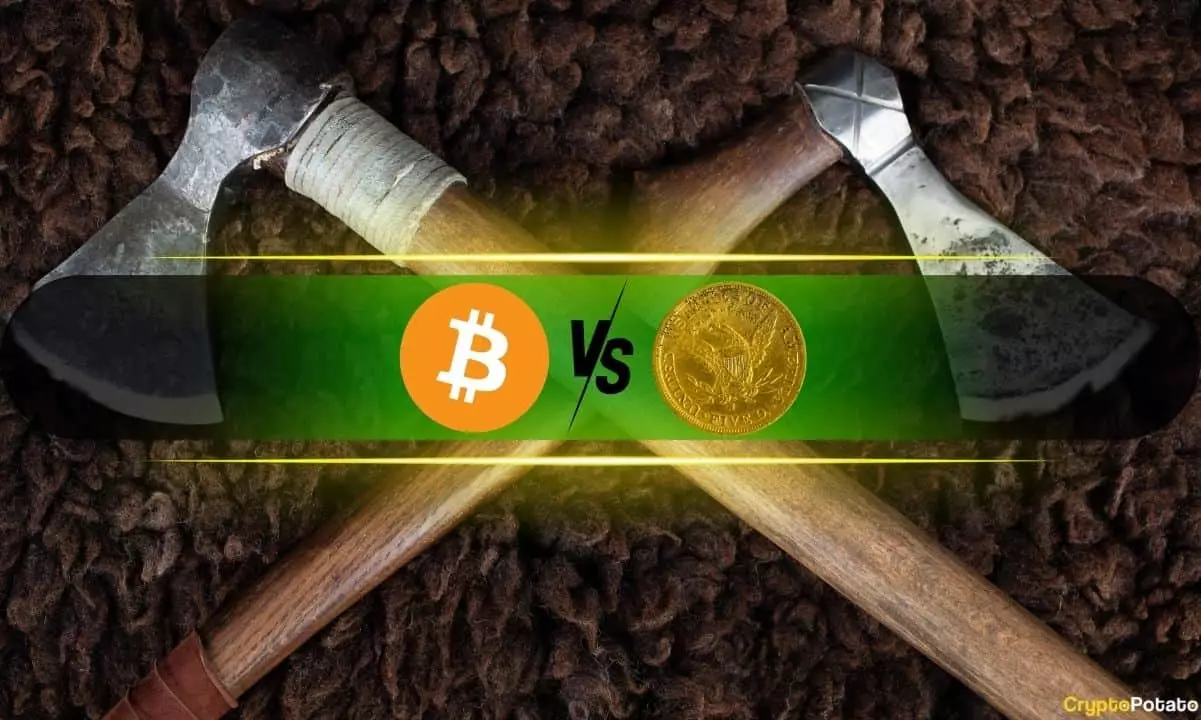As financial markets evolve, the contrasting advancements of Bitcoin and gold have ignited discussions among investors and economic analysts alike. The past six months have unveiled a notable divergence in their price movements, posing crucial questions about the future trajectories of these two storied assets. Gold’s robust rally has set the stage for a possible parabolic rise, while Bitcoin languishes below its previous highs, fostering speculation about the sustainability of its value in an increasingly speculative arena.
Gold’s Ascendancy Amidst Economic Uncertainty
In the heart of 2025, gold has emerged as a beacon of stability in times of economic tumult, inching closer to the milestone figure of $3,000 per ounce. This ascent can largely be attributed to surging inflation rates across the globe, particularly in the United States. Economic unease has been exacerbated by recent political decisions, including those made by President Trump’s controversial leadership style and policy implementations. Investors are instinctively gravitating towards gold, perceiving it as a safe haven akin to its historical function during economic downturns, much like the early days of the COVID-19 pandemic. The rekindled interest has breathed new life into gold markets, with financial experts clamoring to endorse the metal after a prolonged period of skepticism.
Market dynamics reflect this renewed enthusiasm; gold’s market cap stands at around $20 trillion, eclipsing the combined total of the next seven highest-valued assets, including cryptocurrencies like Bitcoin. The sheer dominance of gold has painted a vivid picture of investors’ prioritization of stability over speculation in uncertain times.
In stark contrast, Bitcoin finds itself mired in stagnation. After briefly surging to a high of nearly $110,000 following Trump’s electoral victory in late 2024, the premier cryptocurrency suffered a downturn, now hovering approximately 15% below that peak. The faltering demand for Bitcoin, particularly in the US, is evident through metrics such as the declining Coinbase Premium. Compounding this issue is the tepid performance of local exchange-traded funds (ETFs), which typically serve as a bellwether for generalized investor interest in cryptocurrencies.
Historically, Bitcoin has thrived on market speculation and investor optimism, yet recent trends suggest a waning appetite for risk among market participants. The psychological aspect of investing cannot be underestimated; in an environment where gold increasingly surges amid inflationary pressures and geopolitical tension, Bitcoin’s allure may be fading.
However, the wild, unpredictable tendencies of financial markets complicate any straightforward analysis of the future for Bitcoin. Markets often behave erratically, resulting in price surges that defy logical explanations. While many analysts predict that Bitcoin will continue to struggle in the shadow of gold’s meteoric rise, history teaches us that Bitcoin often reacts contrary to expectation. Price swings and market reversals, driven by speculative fervor, are not uncommon. Investors may see Bitcoin’s prolonged sojourn in the lower price ranges as an opportunity for accumulation, potentially igniting a new wave of demand that could push prices upward, independent of gold’s trajectory.
The paradox of financial markets lies in their inherent irrationality; economic logic does not always dictate market behavior. Therefore, it is prudent for investors to remain cautious while navigating this evolving landscape. While some experts assert that Bitcoin may face ongoing challenges, others maintain that the cryptocurrency could rapidly reclaim its position in the face of unexpected developments.
The dichotomy between gold and Bitcoin encapsulates a broader narrative within the financial ecosystem. As gold enjoys newfound favor amidst escalating global uncertainties and inflation concerns, Bitcoin wrestles with its role as a speculative asset in a transitional economic environment. Whether Bitcoin can rediscover its spark in the foreseeable future remains to be seen, but the less predictable nature of financial markets suggests that dramatic reversals could be on the horizon. Investors would do well to monitor both assets closely, as the interplay between them continues to define strategies and sentiments within the ever-shifting investment landscape.
















Leave a Reply